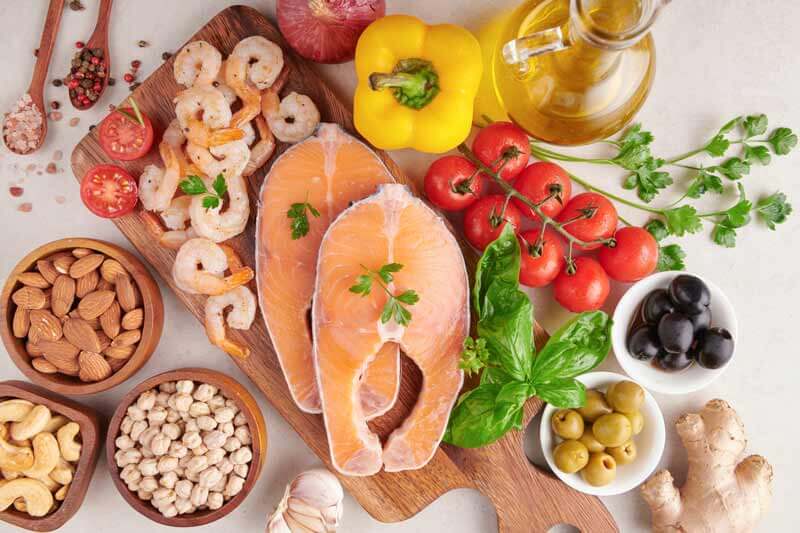Before I start this short post – and try and leave the coronavirus behind me for a bit – I just wanted to say on behalf of the entire team here at Zotrim, that I hope you and your family are safe and healthy, and you’re powering through the current situation.
Times are tough and challenging. Even more so if you’re still trying to eat healthily and watch your weight as well…
If you’ve managed to stay on track up until now, can I just say: well done, you!
It’s difficult. But during times like these, it’s important to do our best to stay strong and keep making healthy choices.
What Will I Learn?
- How Cooking Affects the Nutrients in Your Food
- Boiling
- Microwaving
- Roasting
- Grilling
- Sautéing
- Using a Slow Cooker
- Braising
- Steaming
So, without taking up too much of your time, I just wanted to share this short list of healthy cooking techniques for you to try at home this week.
How Cooking Affects the Nutrients in Your Food
Sometimes, it’s not so much the food you’re eating that is the problem, but how it is prepared.
If you are looking to eat more healthily, one of the first steps is to re-evaluate your cooking methods. But why does this make such a difference?
Cooking and nutrients
Cooking your food has a lot of benefits. It doesn’t just make it taste better, but it improves digestion and it actually helps you absorb more of the nutrients inside (as explained in this study, for example).
That said, depending on your cooking technique you might actually reduce some of the nutrients while cooking.
Some of the most common nutrients that may decrease by cooking are:
- Minerals such as magnesium, calcium, and potassium
- Fat-soluble vitamins A, D, E, and K
- Water-soluble vitamins B and C
As such, the way you cook your food can have a big impact on the number of essential nutrients your body absorbs.
Below, I’ll run you through 8 healthy cooking methods that you can try at home this week.
Boiling
Boiling means completely submerging the food in boiling liquid – sometimes water, but it can also be a broth or a sauce.
Boiling is a common way to cook eggs, vegetables, pasta, rice, and in some cases meats.
The good part about boiling is that it doesn’t add excess fat or calories.
The bad part is that water-based cooking methods strongly reduce the number of water-soluble vitamins (vitamins B and C) in your food.
A surprising bonus, though, is that studies have shown that if you boil fish it retains most of the healthy omega-3 fatty acid, more than when microwaving or frying it.
Be careful not to over-boil, as “tender” can quickly turn to “mushy.”
Microwaving
Yes, really.
Microwaving works by simply heating up water molecules in the food, so not only is it a healthy way to cook, it’s fast and easy.
Studies show that microwaving is especially good for garlic and mushrooms, preserving most of the antioxidant activity.
Just make sure that you are not over- or under-cooking anything, as it can be a little bit tricky to tell at first with the microwave…
Roasting
Roasting means to cook something uncovered in an oven, with very little or no liquid involved. Roasting works very well for vegetables and meats, and in fact the two are often roasted together.
When roasting, the ingredients usually create their own juices, so there’s no need to add extra moisture.
The trick is to keep an eye on the meal and make sure it doesn’t over- or under-cook. For meats, a digital thermometer is a great idea, as it tells you exactly when your meal is ready.
In terms of nutrients, roasting is a great and healthy cooking technique. The only downside is that cooking meat for a long time at a high temperature will significantly reduce vitamin B content.
Grilling
Grilling is popular for meats, fish, vegetables, and even some fruits. With grilling, foods are cooked over charcoal or gas fire.
The food is placed on a grate, which allows excess fat to drip down, thereby reducing the overall fat content of the meal.
Grilling is often done outdoors, but for those who do not have access to a grill set-up, don’t forget that your oven has a “broil” setting, which is a very similar cooking technique that can be done indoors.
Unfortunately, grilling and broiling do have the same negative effect on vitamin B as roasting does.
Sautéing
When something is sautéed it is cooked on the stovetop, typically in a large frying pan, but with a small amount of liquid in the pan. This will usually be broth, light sauce, or plain water.
Sautéing is considered a healthier alternative to frying, as frying relies on oil to do the cooking. Another similar healthy option is stir-frying.
Both these cooking methods are great to improve the absorption of the fat-soluble vitamins in your food. Unfortunately, these techniques do significantly decrease the amount of vitamin C in your food.
Using a Slow Cooker
A slow cooker or crockpot is a great way to get healthy, fork-tender meals without too much work. Raw ingredients are added to the slow cooker about 4 to 8 hours prior to mealtime, and they are allowed to slowly cook all day.
The finished product is incredibly juicy and flavorful, and no extra fat or oil needs to be added to achieve that result.
Braising
Braising is somewhat similar to sautéing, except that braising typically takes place in the oven, not on the stovetop.
A combination of dry heat from the oven and liquid from a broth or light sauce is used to thoroughly cook the entrée.
Steaming
Steaming works very well for vegetables, seafood, and some meats. With steaming, the food is usually placed in a basket or rack that is suspended over boiling water and then covered with a lid.
This method does not add any excess fat, nor does it require the food to be submerged.
On top of that, it’s considered one of the healthiest cooking methods in terms of retaining nutrients.
The only downside is that steamed vegetables may taste a bit bland, but there’s nothing some good seasoning can’t fix!
Keep Your Nutrients, Cook Healthy
Different cooking techniques can expand your menu to include more interesting foods.
When you enjoy the foods you eat, you are not as subject to boredom or cravings.
So why not try and expand your cooking techniques a bit so that you can introduce a wider variety of healthy foods into your diet?
Enjoy!















